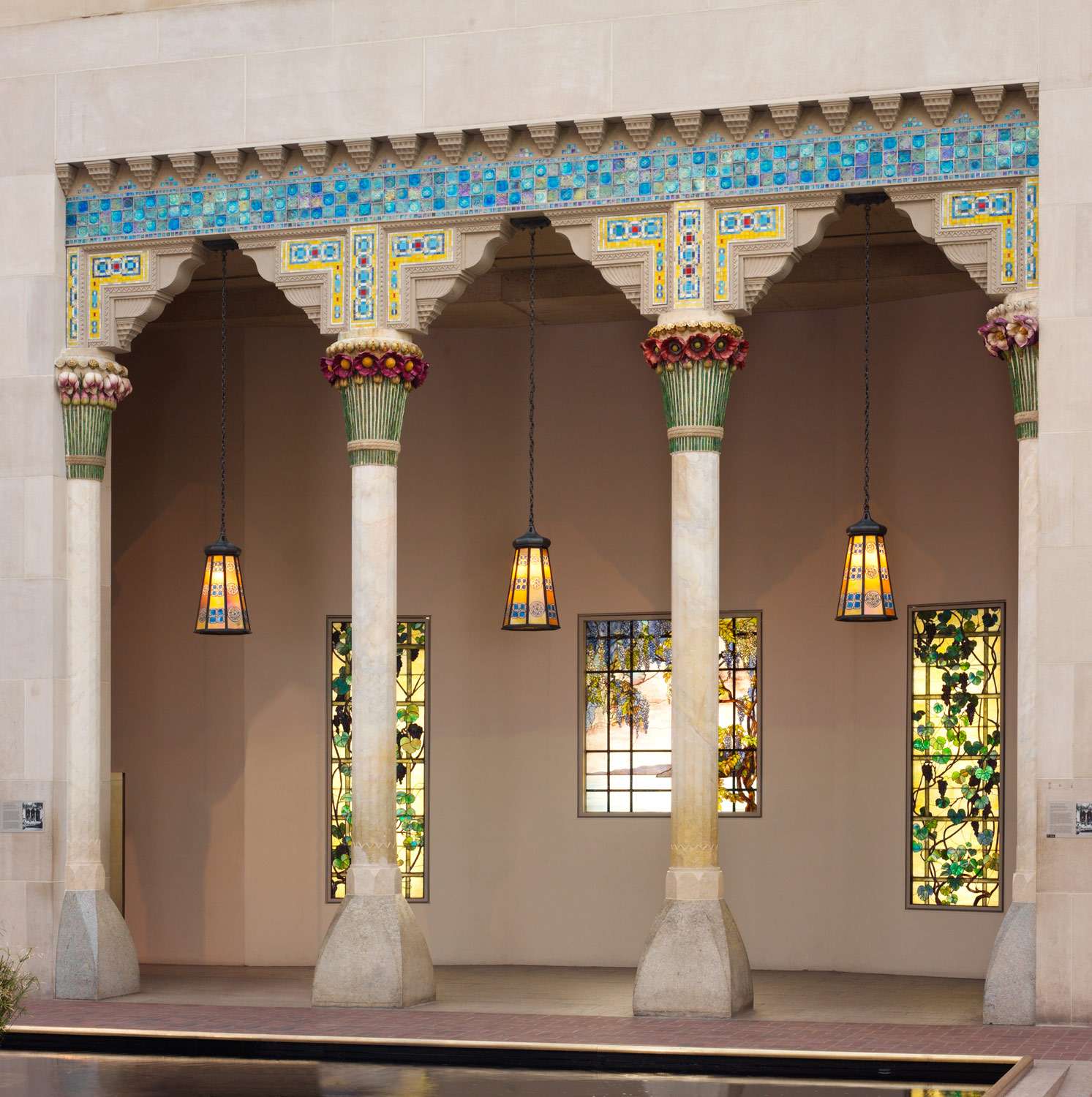From elegant enamel to precise patterns, tile art and its incorporation into mosaic form have been a means for artistic and individual expression for millennia. We’ve lavished attention on mosaic art elsewhere, but mosaic only discusses one type of tile art: that which is created by the arrangement of tiny tesserae in intricate patterns. The aim, then, of this article is to highlight the respective and exponentially more diverse history of tile art, a rich legacy that continues to grow today as designers and decorators are increasingly embracing the art of tile as a means of conjuring a more dynamic interior.
Where does the story of tile begin, though? This blog offers a brief glimpse into the medium’s enduring and engaging past in hopes of both informing and inspiring our readers to make the leap into tile art.
Tile can trace its roots far back into the ancient world when our early global ancestors found the need for custom forms within architectural contexts. The name “tile,” in fact finds it origins in the Latin tegula, which referred to “roof tiles.” While tiles first appeared in these functional formats, it was not long before an appreciation for their creative potential was realized.
The cultures of ancient Mesopotamia, for instance, began experimenting with tile art as early as the 4th century B.C. It is among these artifacts that we find some of the most innovative tile designs in history. Sumerians, for example, experimented with wall cone mosaics, wherein they created a series of cylindrical clay tiles (similar in design to a wine bottle cork). The result was a fantastic pattern, such as that seen in this fragment in the British Museum, that gave texture and color to their temple forms. The ancient Babylonians also began experimenting with enameled tile. These luminous tiles came together in impressive, textured motifs that gave their structures a remarkable luster and accentuated their rich color palettes.
The Mesopotamian innovations such as the cylindrical and enameled tiles fueled further exploration and experimentation with tile forms, such that by the Roman Empire the tile art was a field of its own. Their predecessors, the Etruscans, for example, capitalized on tile to decorate their revered temples. They were known to line the ridgeline of these structure’s roofs with decorative tile additions known as antefixes, which, like this example in the Getty Museum, featured figures important to Etruscan religious practice.The Romans incorporated tile art as well, adding pattern and pizazz to almost all of their interiors with stylized tile motifs.
This tantalizing tile work grew exponentially following the fall of Rome, as the cultures of the Byzantine and Islamic worlds explored the potential of elaborately decorated tile. Such can be seen in the remarkable decorative scheme of the Dome of the Rock, one of the earliest surviving examples of Islamic architecture. Both the façade and the interior are enveloped in rich tile art in luxurious colors that create an interior that is simultaneously impressive and inviting.
The brilliance and intricate patterning established during these past era was revived during the late years of the 19th century, as enameled and glass art tile came into popularity during the ages of Art Nouveau and the Arts and Crafts Movement. Channeling the beautiful colors and geometric genius from examples from the Byzantine and Eastern traditions, masters such as Louis Comfort Tiffany ensured with his late 19th-century designs, that elaborate tile and mosaic artwork would continue to be revered in the most elegant interiors. Examples such as Tiffany’s installations at Oyster Bay’s Laurelton Hall (now reconstructed in New York’s Metropolitan Museum of Art) reveal this magnificence and reinforce why tile art is such an enduring artistic presence.
This enthusiasm for tile also spawned a renewed love of majolica tile. The majolica tradition of vibrant and decorative painted motifs dates back hundreds of years, first emerging in Renaissance Spain and Italy. Relying on tin glaze to create a matte white surface on which to render rich and colorful pattern, majolica tile proved the ideal accent to conjure a warm, Mediterranean feel.
As these examples reveal, humankind has held a passion for tile art since its earliest generations. From the early enameled tiles of ancient Babylon to the lustrous kin created by Tiffany in the late 19th-century, tile and mosaic work is without a doubt one of the most consistently captivating means of artistic expression and, as these examples have illustrated, can be incorporated into any design plan.
Have a favorite example of tile art from history? Want to recreate it in your living space? Tell us below.
Don’t Forget to Subscribe to our Newsletter for Weekly Updates on Mosaic Art, Decor, Creativity and Much More!



